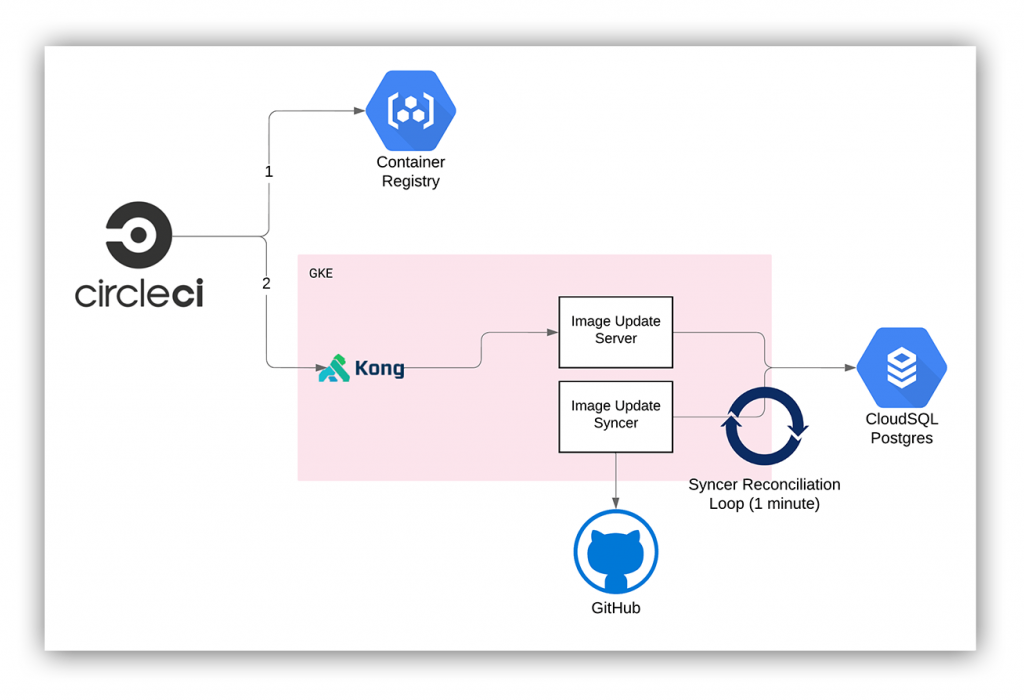
How I GitOpsed My CircleCI: A Comprehensive Guide
Hey there! Are you tired of manually deploying your applications and constantly troubleshooting errors? Do you want to streamline your development process and take advantage of the power of GitOps? Look no further! In this blog post, I will guide you through the steps to implement GitOps using CircleCI.
What is GitOps?
Before diving into the topic at hand, let’s first define what GitOps is. GitOps is a software development methodology that uses Git as the single source of truth for defining and managing infrastructure and application deployments. With GitOps, all changes to the infrastructure and application code are made through pull requests, and the entire deployment process is automated. This approach ensures consistency, reproducibility, and version control.
Why use CircleCI for GitOps?
CircleCI is a continuous integration and continuous delivery (CI/CD) platform that helps automate the building, testing, and deploying of software applications. It integrates seamlessly with Git and allows for easy configuration and deployment of infrastructure and application changes. With CircleCI, you can easily set up workflows that automate the entire deployment process, from testing to production.
Getting Started: Setting Up Your CircleCI Account
To get started with GitOps using CircleCI, you first need to set up a CircleCI account. Follow these steps to set up your account:
- Go to the CircleCI website and sign up for a free account.
- Once you have created your account, sign in to the CircleCI dashboard.
- Next, you need to connect your CircleCI account to your Git repository. Click on the “Add Projects” button on the left-hand side of the dashboard and select your Git repository from the list.
- CircleCI will then automatically detect your project’s configuration files and generate a default configuration for you. You can customize this configuration later to suit your needs.
Setting Up Your GitOps Workflow
Now that you have set up your CircleCI account, it’s time to set up your GitOps workflow. Here’s how:
Step 1: Create a New Branch
The first step in setting up your GitOps workflow is to create a new branch in your Git repository. This branch will be used to make all changes to your infrastructure and application code.
Step 2: Make Changes
Once you have created your new branch, it’s time to make changes to your infrastructure and application code. You can make these changes directly in the branch or create a new branch for each change.
Step 3: Create a Pull Request
After making your changes, create a pull request to merge your changes into the main branch. This pull request will trigger the deployment process in CircleCI.
Step 4: Set Up Your CircleCI Configuration
To set up your CircleCI configuration, create a new file called .circleci/config.yml in your Git repository’s root directory. This configuration file will define the deployment process for your application. Here’s an example configuration:
version: 2
jobs:
build:
docker:
- image: circleci/node:13.2.0
working_directory: ~/app
steps:
- checkout
- run: npm install
- run: npm test
- persist_to_workspace:
root: ~/app
paths:
- .
deploy:
docker:
- image: google/cloud-sdk:272.0.0
working_directory: ~/app
steps:
- attach_workspace:
at: ~/app
- run: gcloud auth activate-service-account --key-file=service-account-key.json
- run: gcloud app deploy app.yaml --project=my-project
workflows:
version: 2
build-and-deploy:
jobs:
- build
- deploy:
requires:
- build
filters:
branches:
only: masterThis configuration file defines a workflow that consists of two jobs: build and deploy. The build job is responsible for building and testing the application, while the deploy job deploys the application to Google Cloud Platform (GCP).
Step 5: Test and Deploy
After setting up your CircleCI configuration, it’s time to test and deploy your application. To do this, simply merge your pull request into the main branch. CircleCI will then automatically trigger the deployment process, and your application will be deployed to GCP.
Conclusion
And there you have it! With these simple steps, you can set up GitOps using CircleCI and streamline your development process. Remember to use Git as the single source of truth for your infrastructure and application code, and automate your deployment process using CircleCI. Happy coding!
Email- contact@devopsschool.com

 Starting: 1st of Every Month
Starting: 1st of Every Month  +91 8409492687
+91 8409492687  Contact@DevOpsSchool.com
Contact@DevOpsSchool.com
